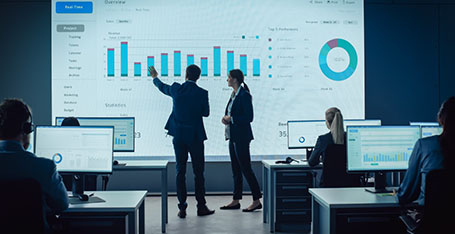Step 1 : Define Your Baseline
Advanced Data Audit
Put simply if you are not monitoring your environment accurately then you cannot manage it properly. The first step for us is to help you understand the best ways to achieve what you want from your environment. A full discussion around your targets for the business whether it’s becoming CCA ready, gaining ISO50001, closer monitoring of your facilities or your IT infrastructure, resilience of the environment and having a strategy in place when things go wrong.

Advanced Data Audit
How We Can Help
Choose one or more items from our range of detailed and targeted audits to best suit your requirements:
Maximum available power – Measure the existing data centre electrical infrastructure and IT specific average loads and identify both the total power consumed and maximum power available for future expansion.
CRAC power consumed and cooling capacity – Determine power consumed by CRAC and any other cooling systems involved with each space. Determine existing cooling capacity and any spare cooling capacity of these systems to cope for increases in load.
Power consumed by IT subsystem hardware – (Where applicable) Determine power consumed by UPS and transfer switches due to inefficiencies at not being operated at their optimum load.
Peak power requirement – Measure the peak power requirement of the data centre by the installation of temporary load monitoring equipment to measure consumption over a representative period.
Calculate the PUE – Calculate the Power Usage Efficiency for each data centre as a baseline to assess future changes.
Aisle temperature – Measure and present graphically aisle temperatures (centred between cabinets at appropriate intervals.) Measure cabinet temperatures at bottom, middle and top locations. Where appropriate, measure CRAC supply and return temperatures.
Aisle humidity – Examine any CRAC that feature humidification. Determine optimum setting of any humidification plant so as to not detract cooling capacity and also minimise the use of energy.
Room airflows (including where relevant vented floors) – Measure and identify room airflows (including any floor plenums) and present information in graphic form. Report observations on any hot/cold aisle short circuiting, possible floor ventilation tile relocation to service the highest heat loads, identify significant room leakage points caused by poor construction or insufficient cable sealing.
Data centre energy opportunities – Determine current data centre energy costs and identify opportunities for energy savings, indicating payback periods for implementation of such measures.





